Over the last nine weeks Vladimir Putin has moved more than 90,000 troops to the borders of Ukraine and, according to US intelligence, ordered his military planners to draw up detailed blueprints for a full-scale invasion. Putin insists the build-up is defensive. Russia is acting only in response to a ‘growing threat on our western border’, he told an audience of newly accredited diplomats in the Kremlin earlier this month, and to accuse Moscow of escalating tensions would be ‘laying the blame at the wrong door’.
Call it the Kennedy defence. In September 1962 US intelligence uncovered secret Soviet plans to station short- and intermediate-range nuclear missiles in Cuba. President John F. Kennedy lost no time in publicly warning the USSR that ‘if Cuba should ever become an offensive military base of significant capacity for the Soviet Union, then this country will do whatever must be done to protect its own security and that of its allies’.
Many — not least the Ukrainians — would find the comparison of Putin to Kennedy odious. But there is no denying that Putin believes he is following exactly the same logic. If America is entitled to protect its backyard from enemy military build-up, why not Russia?
Opposing Nato expansion has been a drum that Putin has been banging for more than 20 years — so far to no effect other than to scare his neighbours further into Nato’s embrace. But he remains convinced that the alliance has been consistently acting in bad faith, promising one thing and doing another. Last week, he said that all Russia wants is to be ‘granted reliable and long-term security guarantees… precisely legal, juridical guarantees because our western colleagues have failed to deliver on verbal commitments they made. Specifically, every-one is aware of the assurances they gave verbally that Nato would not expand to the east. But they did absolutely the opposite.’
Those ‘assurances’ are a myth invented by Mikhail Gorbachev, who claimed that during a summit in 1990 the US secretary of state James Baker told the Soviets that Nato would never expand. Gorbachev later admitted that the claim was untrue. Nonetheless, Putin clearly continues to believe in a great Nato double-cross — and complains that ‘Russia’s legitimate security concerns were ignored and they continue to be ignored in the same manner even now’.
But does Putin’s wrong-headed belief in nonexistent ‘verbal commitments’ made to a distant predecessor mean that Russia has no legitimate security concerns? It’s important, if the current border crisis is not to escalate into an accidental war, to understand just how strongly Putin believes that the presence of Nato forces in Ukraine represents an existential threat to his country.
The view from Moscow is that Ukraine, like Cuba, straddles a strategically vulnerable underbelly. In the Kremlin’s mind, Ukraine’s government has, like Cuba’s in 1959, been taken over in a popular revolution sympathetic to the enemy. In response, Putin sponsored an attack in eastern Ukraine by proxy local militias to topple that revolutionary government — just as Kennedy did at the Bay of Pigs in 1961. And both Kennedy and Putin were concerned to protect a sovereign naval base left deep in enemy territory: Guantanamo Bay and Sevastopol respectively. The difference is that Putin succeeded where Kennedy failed in carving off and holding pieces of his former colony. But will Putin succeed, as Kennedy did, in forcing his enemies to back down? The answer lies in which of three historical models Joe Biden and Nato choose to pursue: deterrence, containment or appeasement.
Deterrence, in the form of a convincing threat of devastating military retaliation, is what won the Cuban Missile Crisis for Kennedy. Containment, a concept coined by the US diplomat George Kennan in 1946, advocated recognising that ‘at the bottom of the Kremlin’s view of world affairs is a traditional and instinctive Russian sense of insecurity’ and urged the United States and its allies to ‘contain’ the Soviets in a ‘non-provocative way’. An appeaser was most memorably described by Winston Churchill as ‘one who feeds a crocodile — hoping it will eat him last’. He used the analogy in 1940 about Hitler and again in 1954 to warn about Stalin’s imperialism.
Biden acts as though he has emphatically chosen deterrence. Yet in a video-summit this week Biden and Putin waved at each other and smiled. And while Biden outlined the ‘high cost’ to Russia of attempting an invasion of Ukraine, the only measures he mentioned were tougher economic sanctions, not US or even Nato troops on the ground. A (mercifully) far cry from Kennedy’s order to scramble armed, long-range nuclear bombers while he negotiated with Khrushchev.
Western security sources agree there’s no realistic scenario in which Putin could win a ground war against Ukraine. Mobilisation — Russia’s second this year — is simply his blunt way of getting Washington to take his complaints about Nato provocations seriously. Ukraine, too, has been playing up fears of an invasion to bolster its own agenda: mobilising allies to its defence and boosting western military aid. In Canada this week the defence minister Oleksii Reznikov urged ‘the Anglo-Saxon allies’ to act outside Nato if necessary to support Ukraine’s military. In September, Prime Minister Volodymyr Zelensky visited Biden in the White House and pleaded for a faster action plan for his country to join the alliance. ‘I feel that the President personally supports Ukraine regarding the granting of Nato membership,’ said Zelensky after the meeting.
But that’s profoundly misleading. Whatever Zelensky feels about Biden’s personal beliefs, neither Ukraine nor fellow aspirant Georgia can join Nato — for a cast-iron legal reason. Both countries have multiple border disputes with their neighbours, many of which pre-date Russia’s invasions of Georgia in 2008 and Ukraine in 2014. By Nato’s own rules, these ‘frozen conflicts’ exclude them from membership until they are resolved. And they can only be resolved if Putin withdraws his troops and proxies from Crimea, Donbas, Transnistria, Abkhazia and South Ossetia. Which is clearly never going to happen.
Even so, in his meeting with Zelensky, Biden affirmed that ‘the United States remains firmly committed to Ukraine’s sovereignty and territorial integrity in the face of Russian aggression’. In confronting Putin, Biden is channelling his predecessor Harry S. Truman. The United States’ mission is ‘to support free peoples who are resisting attempted subjugation by armed minorities or by outside pressures’ anywhere in the world, Truman told Congress in 1947. That doctrine has been the basis for all America’s wars ever since.
But many European allies — particularly France and Germany — are less convinced that confrontation will work. Moreover, says one senior EU diplomat with long experience in Nato-Russia relations, ‘there is a feeling in some quarters that Nato has been diverted from a defensive alliance into an arm of aggressive, even evangelical US foreign policy’.
According to its 1949 charter, Nato exists to ‘promote stability and well-being in the North Atlantic area’. Members pledge to ‘safeguard the freedom, common heritage and civilisation of their peoples, founded on the principles of democracy, individual liberty and the rule of law’. Key word: their peoples’ freedom — not any other people’s. ‘Any act of international aggression must obviously be punished,’ says the diplomat. ‘But there is a legitimate and serious concern: is the military side of our engagement with Ukraine in fact stabilising or destabilising the situation?’
After their September meeting, Biden promised Zelensky some $60 million in increased military aid, including Javelin anti-tank missiles. That’s in addition to the $1.6 billion in military assistance already given by the US to Kiev since 2014. Canada has a 200-strong military training mission — dubbed Operation Unifier — headquartered in Yavoriv, in the far west of Ukraine. Since 2015, Britain has given £2.2 million in ‘non-lethal equipment’ and also runs a training programme known as Operation Orbital, ‘a non-lethal training and capacity building operation that provides guidance and training to the Ukrainian armed forces’. The US and Britain are working to upgrade Ukrainian naval bases at Ochakiv, on the Black Sea, to accommodate US ships in the wake of Ukraine’s loss of Sevastopol in 2014. And the UK is also helping to build a Ukrainian naval base in Berdyansk on the Sea of Azov — a body of water almost completely landlocked by Russian-annexed Crimea.
Compared with Putin’s £45 billion annual military spend, Nato’s assistance is more symbolic than militarily decisive. But why is Nato supporting Ukraine militarily at all? ‘Because we want to send a clear message to Putin that he cannot get away with further aggression against his neighbours,’ says a senior UK security source. But could Nato assistance be the cause of, not the solution to, Putin’s aggression? ‘Absolutely not,’ the source says. ‘Putin’s a Russian imperialist. He’s just gaslighting [the West] by portraying his basically expansive agenda as defence.’
That’s the heart of the matter. If you consider Putin an inveterate empire-builder determined to restore the USSR by force, the only way to stop him is to arm his neighbours and practise maximum deterrence — even at the risk of war. If you believe that Putin is basically rational and concerned above all about defending his country against outside threats, then military aid to Ukraine and escalating threats are needless provocations. Failing to deliver real deterrence while continuing to stoke Russian fears of Nato expansion is the worst of both worlds.
In principle, the West does not wish to be seen to be backing down in the face of Putin’s multiple invasions of his neighbours. In practice, Nato did little to protect its so-called allies when Russian troops rolled in, and equally little to punish Putin for his actions. And Biden’s threat of sanctions is far from the full-throated pledge of Nato support that Zelensky dreams of.
There’s a third way — one successfully pursued by Barack Obama when he struck a historic deal with Iran in 2015. Iran, like Russia, was a serial aggressor whose proxies had destabilised the region. Yet the Obama administration saw that continued confrontation would only lead both sides into an eventual conflict. Ukrainians, of course, would complain bitterly that any deal made over their heads between Washington and Moscow would be a profound betrayal of their nationhood — as well as a confirmation of Putin’s right to bully his neighbours. But the basic truth remains that Ukraine cannot ever join Nato. So why does the West continue behaving as though it might — and by doing so, threaten not only Europe’s security but that of Ukraine itself?
Got something to add? Join the discussion and comment below.
Get 10 issues for just $10
Subscribe to The Spectator Australia today for the next 10 magazine issues, plus full online access, for just $10.
You might disagree with half of it, but you’ll enjoy reading all of it. Try your first month for free, then just $2 a week for the remainder of your first year.

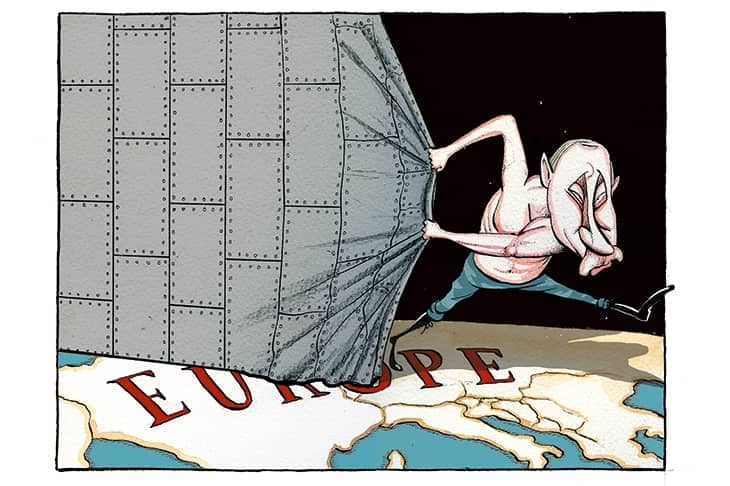
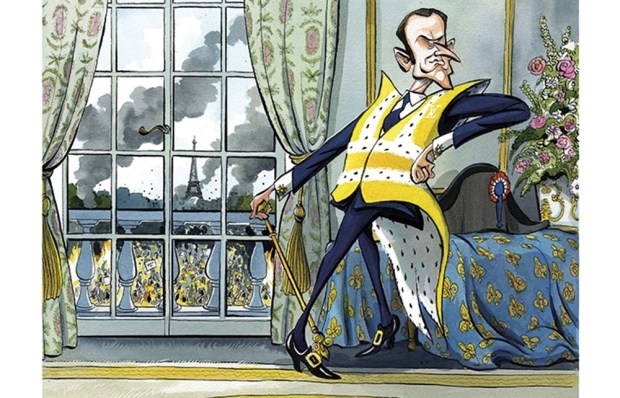
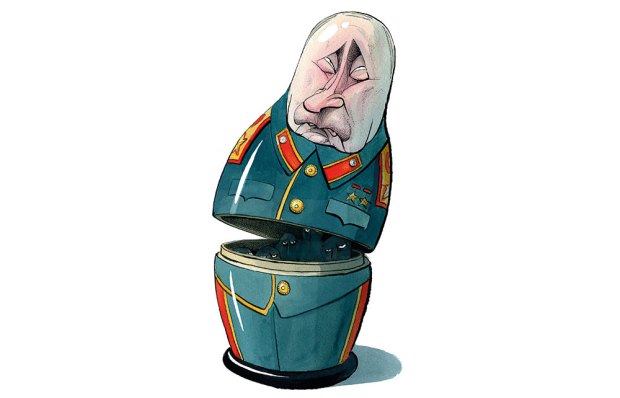
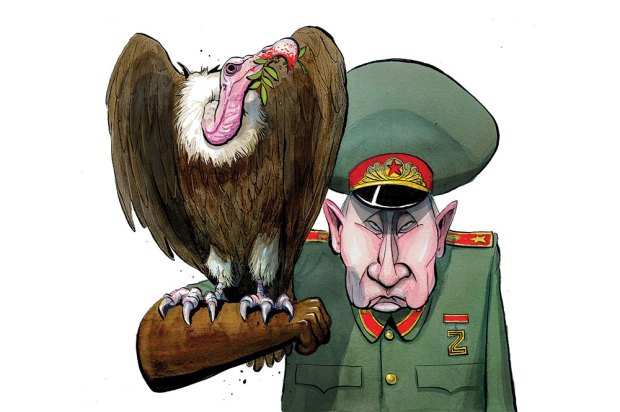
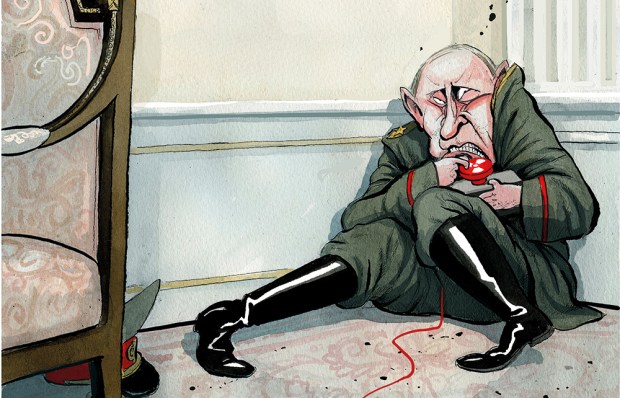
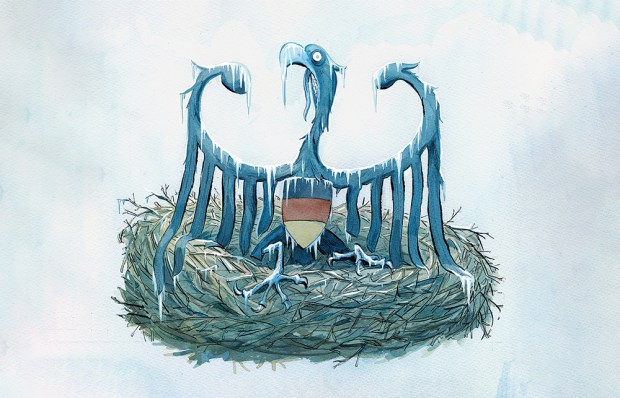







Comments
Don't miss out
Join the conversation with other Spectator Australia readers. Subscribe to leave a comment.
SUBSCRIBEAlready a subscriber? Log in